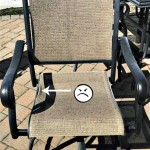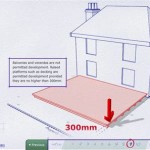How to Build a Pea Gravel Patio on Sloped Ground in Virginia Beach
Building a pea gravel patio can significantly enhance the outdoor living space of a property. However, constructing such a patio on sloped ground presents unique challenges, particularly in a coastal environment like Virginia Beach. The goal is to create a level, stable, and aesthetically pleasing surface that endures the region's weather conditions. This article outlines the steps involved in building a pea gravel patio on sloped ground in Virginia Beach, focusing on proper preparation, drainage, and material selection.
Planning and Preparation: A Foundation for Success
The initial phase of patio construction is crucial and involves meticulous planning and preparation. This stage sets the stage for a durable and functional outdoor space. Ignoring crucial factors at this stage can lead to future problems, such as erosion, uneven surfaces, and compromised structural integrity.
Site Assessment and Permitting: Begin with a thorough assessment of the slope's gradient and the existing soil conditions. Virginia Beach's coastal environment often features sandy soil, which requires specific considerations for drainage and stabilization. Contact the Virginia Beach Department of Planning and Community Development to determine whether permits are required for the project. Regulations vary depending on the scale of the project and proximity to property lines, wetlands, or other protected areas. Obtaining the necessary permits ensures compliance with local building codes and avoids potential fines or delays.
Design and Layout: Develop a detailed patio design that accommodates the slope. Consider the size and shape of the patio, as well as its intended use. Incorporate retaining walls or terracing to create level surfaces where necessary. Mark the patio's proposed location with stakes and string. Use a line level or laser level to establish a level line and accurately measure the amount of excavation required. Consider the placement of any features, such as seating areas, fire pits, or landscaping elements. Clearly defining the patio's boundaries is essential for accurate excavation and base preparation.
Material Selection: Choose materials that are appropriate for the Virginia Beach climate and soil conditions. Pea gravel is a popular choice for patios due to its affordability, aesthetic appeal, and ease of installation. Select a size of pea gravel that is comfortable to walk on and will not easily shift or erode. Geotextile fabric is crucial for preventing weed growth and separating the gravel from the underlying soil. Consider using crushed stone or gravel as a base layer to improve drainage and stability. Ensure that all materials are readily available from local suppliers in Virginia Beach to minimize transportation costs and delays.
Tools and Equipment: Gather all necessary tools and equipment before beginning the project. Essential tools include shovels, rakes, a wheelbarrow, a tamper, a level, measuring tape, stakes, string, and a compactor. Depending on the scale of the project, consider renting a power compactor to properly compact the base layer. Ensure that all tools are in good working condition and that safety equipment, such as gloves, eye protection, and sturdy footwear, is readily available. Having the right tools and equipment on hand will streamline the construction process and improve the quality of the finished patio.
Excavation and Base Preparation: Creating a Stable Foundation
Proper excavation and base preparation are paramount for ensuring the stability and longevity of the pea gravel patio. This process involves removing existing vegetation and soil, creating a level base, and providing adequate drainage to prevent water accumulation.
Excavation: Begin by removing all vegetation, topsoil, and debris from the designated patio area. Excavate to a depth that accounts for the base layer, geotextile fabric, and pea gravel. The excavation depth will vary depending on the slope and intended patio height, but a minimum depth of 6-8 inches is generally recommended. For sloped areas, excavate in tiers or terraces to create level pads. Ensure that the excavation is slightly wider than the planned patio dimensions to allow for edging or retaining walls. Use a level to check the slope of the excavation and make adjustments as needed. Proper excavation is crucial for creating a stable and level base for the patio.
Retaining Walls (if applicable): If the slope is significant, install retaining walls to create level terraces. Retaining walls can be constructed from various materials, such as concrete blocks, timber, or natural stone. Ensure that the retaining walls are properly engineered and constructed to withstand the pressure of the soil. Backfill behind the retaining walls with gravel to improve drainage. Retaining walls not only create level surfaces but also add visual interest and define the patio area.
Base Layer Installation: After excavation, install a base layer of crushed stone or gravel. This layer provides a stable foundation and improves drainage. The base layer should be compacted in layers using a hand tamper or power compactor. Aim for a compacted base layer thickness of at least 4 inches. Ensure that the base layer is level and free of any large rocks or debris. Proper compaction of the base layer is essential for preventing settling and maintaining a level patio surface.
Geotextile Fabric Installation: Lay geotextile fabric over the compacted base layer. The fabric prevents weeds from growing up through the pea gravel and separates the gravel from the underlying soil. Overlap the edges of the fabric by at least 12 inches and secure them with landscaping staples. Ensure that the fabric is taut and free of wrinkles. Geotextile fabric is a crucial component for maintaining a weed-free and stable pea gravel patio.
Pea Gravel Installation and Finishing Touches: Creating a Lasting Outdoor Space
The final phase involves installing the pea gravel, leveling the surface, and adding any desired finishing touches. Careful attention to detail during this stage will ensure a beautiful and functional pea gravel patio that enhances the overall aesthetic of the property.
Pea Gravel Installation: Spread the pea gravel evenly over the geotextile fabric. Use a rake to distribute the gravel to a depth of 2-4 inches. Avoid dumping large piles of gravel in one area, as this can create uneven surfaces. Work in small sections, gradually building up the gravel layer. Ensure that the gravel is spread uniformly and covers the entire patio area. The depth of the pea gravel layer will influence its stability and comfort underfoot.
Leveling and Compaction: Use a rake or level to create a smooth and even surface. Fill in any low spots with additional gravel. Compact the pea gravel using a hand tamper or plate compactor. Compaction helps to lock the gravel particles together and prevent shifting. Continue to level and compact the gravel until the surface is firm and uniform. A level and compacted pea gravel surface is essential for creating a comfortable and functional patio.
Edging and Borders: Install edging or borders to contain the pea gravel and prevent it from spreading. Edging can be made from various materials, such as plastic, metal, wood, or natural stone. Choose a material that complements the overall design of the patio and the surrounding landscape. Secure the edging in place with stakes or concrete. Edging not only contains the pea gravel but also adds a finished and polished look to the patio.
Finishing Touches: Add any desired finishing touches, such as furniture, planters, or lighting. Arrange seating areas to create a comfortable and inviting outdoor space. Incorporate landscaping elements to enhance the patio's aesthetic appeal. Consider adding a fire pit or water feature to create a focal point. Ensure that all elements are properly positioned and secured. Finishing touches personalize the patio and transform it into a functional and enjoyable outdoor living space.

Hillside Gravel And Timber Path Done Digging

Hillside Gravel And Timber Path Done Digging

Hillside Gravel And Timber Path Done Digging

Diy Pea Gravel Patio

Patio Diy An Easy Affordable Gravel Gold Coast Canvas

Can I Build A Path With Pea Gravel And Pavers On Slope

Patio Diy An Easy Affordable Gravel Gold Coast Canvas

How To Build A Rock Patio Saunders Landscape Supply

Garden Design Lessons From A Gravel Digging

How To Make A Diy Pea Gravel Patio Outdoor
See Also








